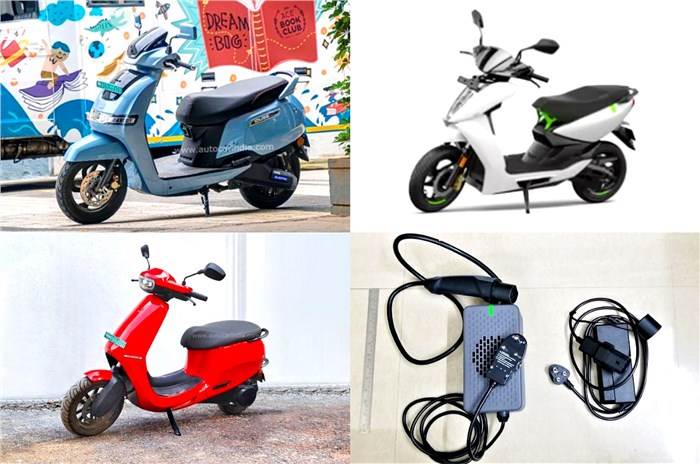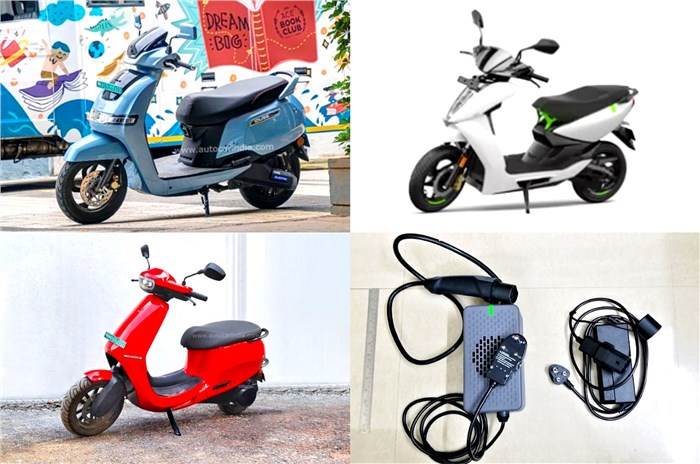Electric two-wheelers in India are set to get costlier from June 1, 2023 as the government of India has revised the subsidy on the FAME India (Faster Adoption and Manufacturing of (Hybrid &) Electric Vehicles in India) Scheme to Rs 10,000 per kilowatt per hour (kWh) as against Rs 15,000/ kWH. Furthermore, the cap for incentive has been brought down to 15% of the two-wheeled EV’s ex-factory price as against 40% benefit extended earlier. That’s a 37.5% cut, which will easily translate into higher vehicle prices.
As per a gazette notification issued on Sunday, May 21, the Ministry of Heavy Industries (MHI) has stated, in a partial modification of its notification issued vide S.O.2258(E) dated June 11, 2021, these amendments will come into force from June 1, 2023.
The three-year FAME II Scheme, for which the government approved an outlay of Rs 10,000 crore, kicked in from April 1, 2019 and received a two-year extension in June 2021, thereby taking the effective period of the subsidy scheme to March 31, 2024.
It was in June 2021 that MHI, in an effort to accelerate demand for electric two-wheelers, increased the demand incentive from Rs 10,000/kWh to Rs 15,000/kWh with the maximum cap increased from 20% to 40% of the cost of the EV. The government’s latest move rewinds the subsidy to what it what two years ago, and also makes an additional 5% cut on the maximum cap of EV cost.
As per the FAME India dashboard, a total of 10,98,406 EVs have been sold in India as of today (May 22, 2023). They include 988,676 two-wheelers, 96,376 three-wheelers and 8,917 four-wheelers. The FAME II Scheme has outlined subsidy for a million (10 lakh) e-two-wheelers, 500,000 e-three-wheelers, 55,000 e-passenger vehicles and 7,090 electric buses. The two-wheeler segment is just 11,324 units shy of its target.
EV sales across vehicle segment hit a record high of over 1.17 million units in FY2023, of which the two-wheeler industry accounted for 61% (720,733 units) and three-wheelers 34% (399,540 units).

Two-wheeled electric mobility gets dearer
Autocar Professional learns that, as a result of the latest revision, all mainstream electric two-wheeler manufacturers will have to increase their product prices by Rs 25,000 to Rs 35,000, particularly for premium and mainstream models.
The Softbank-backed Ola Electric, which is the market leader, may have to take a 20% hit if it decides to maintain the current prices. The Ola S1 Pro, which typically costs Rs 124,999, may cost over Rs 155,000 with a Rs 31,868 additional outgo as a subsidy loss.
The sticker price for Ather Energy’s 450X with Pro Pack, which sells at Rs 146,000 may swell to Rs 171,000 if it decides to calibrate subsidy benefit entirely. And for Hero MotoCorp, the prices for the Vida V1 Pro may go up to Rs 170,000, which is a spike of over 15-18%. Similarly, the TVS iQube’s price too may cross Rs 150,000.
This reduction in FAME subsidy comes at a time when the domestic electric two-wheeler market, which had surpassed 700,000 unit sales in FY2023, is witnessing a month-on-month sales decline. Retail sales have dropped to 66,810 scooters in April 2023 compared to a monthly average of 75,000 units in the preceding quarter.
According to Okinawa Autotech, despite efforts by the firm to minimise cost increases due to cost-saving initiatives and other productivity efficiency measures to keep prices in check, consumers will still be required to pay the difference. “Any decrease in the subsidy value will result in an increase in the customer’s price. It is a proper move for the industry to become independent, even though there may be a short-term impact on the total volumes. Over the next year, we will prepare for a system without subsidies, said the spokesperson for Okinawa Autotech
An Ola Electric spokesperson said that “no decision has been taken on the price hikes and the team will be meeting on Monday (May 22) to take into account an appropriate decision on the pricing in light of the renewed situation.”
Previously, Ola Electric CEO Bhavish Aggarwal has said that the company was bracing itself to live without subsidies “even if the subsidies are stopped, Ola has prepared itself to live in a world without subsidies, as we are developing technologies in-house and doing large-scale manufacturing from day one, if FAME subsidies are reduced or curtailed was not affected.”
PLI Scheme to benefit some EV OEMs
Industry analysts say this latest move may put some EV makers, who have invested under the government’s Production Linked Incentive Scheme, in a better competitive position compared to those who did not.
Raghunandhan N L, equity analyst at Nuvama Institutional Equities, told Autocar Professional this subsidy cut will impact the pace of EV penetration and will increase vehicle prices. However, large players such as TVS Motor, Bajaj Auto, Hero MotoCorp and Ola Electric may offset part of subsidy loss through PLI scheme benefits.
“This would lead to better market share for these players, and loss of share for smaller players/start-ups who haven’t qualified for PLI scheme benefits. The reduction in pace of EV penetration may impact valuations for companies that benefit from EV transition,” added Raghunandhan.
With just 10 days to go before the reduced FAME II subsidy kicks in for electric two-wheelers, expect buyers to make a beeline for zero-emission scooters and motorcycles.
ALSO READ:
EV industry sales in India hit 1.17 million units in FY2023
